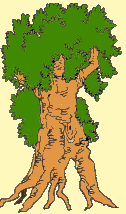Food and calories
The digital calorie chart.
The numerical table below presents the calorific and dietary values of foods commonly used especially in Africa to help you in the preparation of your daily menus. Our concern is that everyone becomes aware of what they are bringing to their body when they are at the table. Let us not forget that a balanced diet is essential for the recovery and maintenance of health and that eating well is already, as a preventive measure, the best way to cope with diseases. The numbers represent the amount of substances per 100 g of food. It is up to you to determine what you get from what you eat. Remember that an orange weighs around 200g to 250g, and water-soluble vitamins are destroyed by oxidation and heat, not to mention that canned products lose most of them. So you have to eat balanced and natural.
|
Food(100g) |
Derivate (100g) |
Kilocalories |
Carbohydrates in g |
Fat in g |
Protein in g |
|
Garlic |
Raw bulbs |
131 |
30,2 |
0,1 |
5,2 |
|
Pineapple |
|
47 |
12,4 |
0,1 |
0,4 |
|
peanuts |
Seeds |
590 |
18 |
50 |
26 |
|
Avocado |
|
104 |
7,4 |
8,8 |
1, 3 |
|
Banana |
|
61 |
17 |
0,1 |
1,25 |
|
Cocoa |
Powder |
273 |
51,5 |
21 |
17 |
|
Caffee |
Infusion |
4 |
1,6 |
0,1 |
0,4 |
|
Sugar cane |
|
62 |
17 |
0,1 |
0,6 |
|
Carot |
|
40 |
10 |
0,13 |
0,6 |
|
Lemon |
Fruit |
30 |
9 |
0,4 |
0,7 |
|
Coconut |
Nut |
475 |
15 |
40 |
4 |
|
Dat |
Raw fruit |
142 |
37 |
0,6 |
1,6 |
|
Dried fruit |
293 |
78 |
0,6 |
2,7 |
|
|
Shallot |
|
66 |
16,2 |
0,1 |
1,2 |
|
Ginger |
|
301 |
72,4 |
2,9 |
7,6 |
|
okra |
Dry powder |
280 |
69 |
0,7 |
11,4 |
|
Fresh |
36 |
9 |
0,03 |
2 |
|
|
Cultivated bean |
seed |
50 |
5,5 |
3,2 |
1,7 |
|
Native bean |
Cowpea |
350 |
31 |
28 |
9 |
|
Corn |
Flour, foufou |
360 |
75 |
4 |
9 |
|
Cassava |
Tuber |
145 |
36 |
0,14 |
1,73 |
|
Gari; atchèkè |
351 |
86 |
0,2 |
1,05 |
|
|
Flour |
340 |
84 |
0,2 |
2,75 |
|
|
Nutmeg |
Seed |
477 |
50 |
29 |
9 |
|
Néré |
|
305 |
81 |
0,5 |
4 |
|
Onion |
|
31 |
7,6 |
0,1 |
0,7 |
|
Orange |
|
43 |
10,5 |
0,4 |
0,6 |
|
Papaya |
|
39 |
10 |
0,1 |
0,6 |
|
Sweet potato |
|
109 |
27 |
0,16 |
1,2Dried pigeon peas |
|
potato |
|
62 |
14 |
0,1 |
2,1 |
|
Dried pigeon |
peas |
354 |
66 |
1,3 |
20 |
|
Rice |
|
360 |
80 |
2 |
8 |
|
Sesame |
|
360 |
22 |
48 |
18 |
|
Soybeans |
|
340 |
40 |
18 |
38 |
|
Mil |
|
375 |
75 |
4 |
11 |
|
Taro ; yam |
|
100 |
25 |
0,2 |
1,3 |
Remember that fresh seasonal fruits and vegetables are generally rich in vitamins, minerals, trace elements and fibers without underestimating their intake of carbohydrates, lipids and proteins; fruits are high in carbohydrates (fructose) and nuts are high in fat. 100g of bread provides an average of 260 kilocalories.
Also remember that rice and cereals provide more calories than bread and bread provides more calories than tubers. So in a weight loss diet, it is necessary to privilege the tubers (potato, taro, potato, yam and a few slices of toast). Reduce or eliminate animal oils (nearly 900 calories per 100g), fermented wine drinks and aperitifs (600 kilocalories per 100g). Beware of oilseeds, white sugar, sugary fruit juices, dried fruits, egg yolks, distilled alcoholic beverages because of their calorie content. vegetable oils are recommended but without abuse.
Add a comment






















